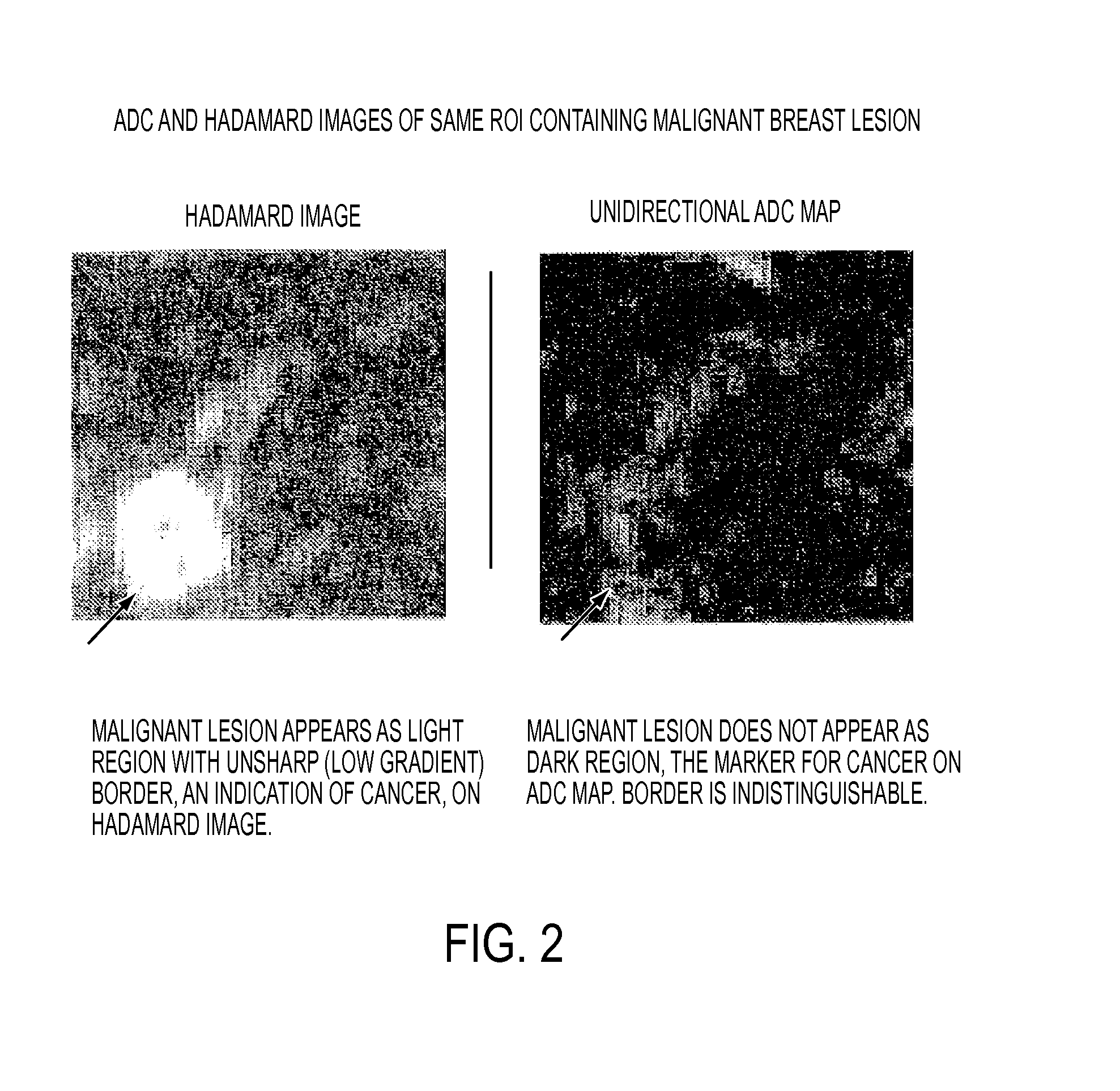Computer aided diagnostic method and device
a computer and diagnostic method technology, applied in the direction of magnetic variable regulation, measurement using nmr, instruments, etc., can solve the problems of suppressing susceptibility and chemical artifacts, dwi has the disadvantages of susceptibility and chemical shift artifacts, and the adc map is not sufficiently sensitive to establish a stand alone, etc., to reduce the number of phase encoding steps and the time required to fill the k-space, and the effect of excellent contras
- Summary
- Abstract
- Description
- Claims
- Application Information
AI Technical Summary
Benefits of technology
Problems solved by technology
Method used
Image
Examples
Embodiment Construction
[0066]Published studies on breast diffusion imaging have reported that 10%-20% of test cases could not be evaluated because of problems related to the quality of the ADC images. For example, Hatakenaka (“Apparent Diffusion Coefficients of Breast Tumors: Clinical Application,” Magn Reson med Sci, 7(1), pp 23-29 (2008)) reported that “34 [of 179] cases were excluded as a result of small lesions and / or poor visualization of the lesions on DWI,” and Partridge (Diffusion Tensor MRI: Preliminary Anisotropy Measures and Mapping of Breast Tumors,” J Mag Res Imag 31, pp 339-347 (2010)) reported that “19 [of 158 lesions] were excluded because of technical problems with the DTI sequence—misregistration (N=15), poor fat suppression (N=2), or incomplete coverage of the lesion (N=2).”
[0067]The present invention provides a method and device that uses diffusion data to generate alternative images to ADC images for the detection and evaluation of possibly cancerous lesions.
[0068]The method and devic...
PUM
 Login to View More
Login to View More Abstract
Description
Claims
Application Information
 Login to View More
Login to View More - R&D
- Intellectual Property
- Life Sciences
- Materials
- Tech Scout
- Unparalleled Data Quality
- Higher Quality Content
- 60% Fewer Hallucinations
Browse by: Latest US Patents, China's latest patents, Technical Efficacy Thesaurus, Application Domain, Technology Topic, Popular Technical Reports.
© 2025 PatSnap. All rights reserved.Legal|Privacy policy|Modern Slavery Act Transparency Statement|Sitemap|About US| Contact US: help@patsnap.com



